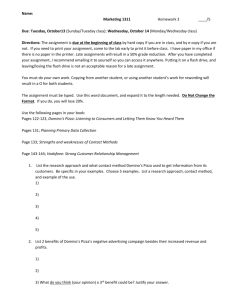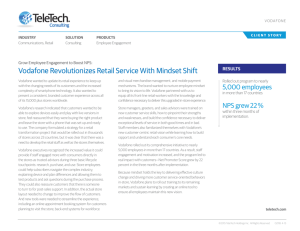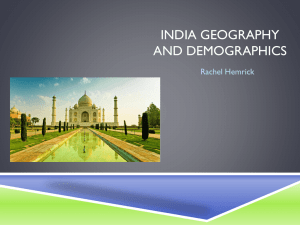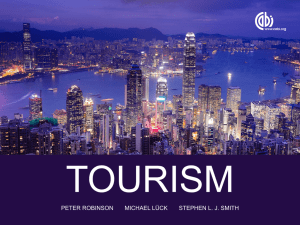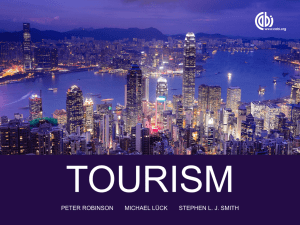Using Mobile Phone Meta Data For National Statistics Content
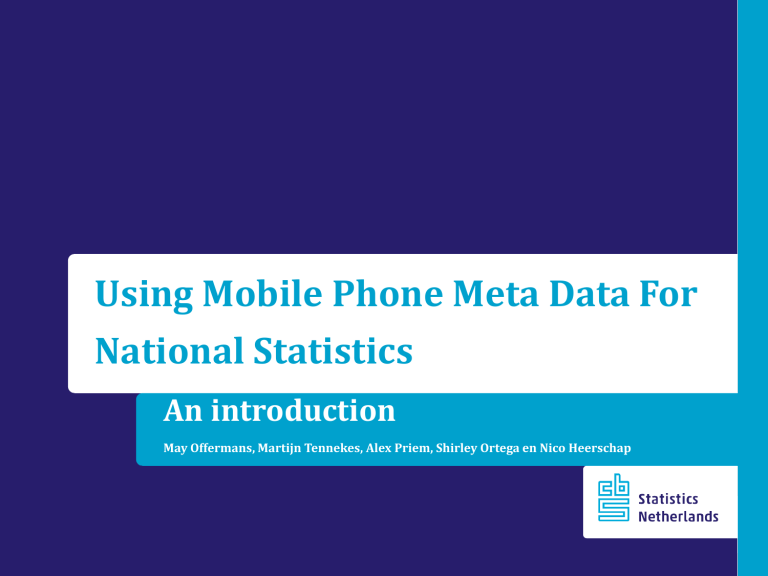
Using Mobile Phone Meta Data For
National Statistics
An introduction
May Offermans, Martijn Tennekes, Alex Priem, Shirley Ortega en Nico Heerschap
Content
1 Data Sources
‐ Event Data Records(EDR)
‐ Customer databases
2 Privacy and processing
3Results
‐ Applications in statistics
• Daytime population
• Tourism
4 Conclusions
2
Source
Call Detail Records/ Event Data Detail Records
Call Detail records can contain many variables like:
– the phone number of the subscriber originating the call (calling party)
– the phone number receiving the call (called party)
– the starting time of the call (date and time)
– the call duration
– the billing phone number that is charged for the call
– the identification of the telephone exchange or equipment writing the record
– a unique sequence number identifying the record
– the disposition or the results of the call, indicating, for example, whether or not the call was connected
– call type (voice, SMS, etc.)
– Each exchange manufacturer decides which information is emitted on the tickets and how it is formatted. Examples:
– Timestamp
3
Source – Mobile Phone Metadata
Call Detail Records/ Event Data Detail Records
– Monthly 4 Billion Event Data/Detail Records of
6-7 million users contains information of:
‐ Antenna location
‐ Time indicator
‐ In- or outgoing
‐ Technology information (data, sms, call ..dual/umts)
‐ Roaming (foreign devices)
– Customer database (unique number of foreign callers per months)
4
Applications under research
‐ Daytime population
‐ Mobility, of which tourism
‐ Safety
‐ Demographics
‐ Border traffic
‐ Economical activity
‐ Disaster management or safety planning
‐ Use of public services
‐ Sociology (calling patterns)
‐ Health
Population
Titel van de presentatie
Privacy & Process (1)
– Problems big data
‐ Dynamical data source that keeps on growing
‐ Daily change of antenna locations (4G)
‐ Software
‐ Transporting data
‐ Security issues
‐ Privacy
‐ Costs ->>>>
7
Privacy & Process (2)
Anonymized aggregated data
‐ Micro data from the mobile network will be transferred to a new server system.
‐ During this process most sensitive variables become hashed or deleted.
‐ Only Mezuro has access to the process to collect aggregated anonymized data
Validated output for mobility reporting
Aggregation & validation
(Anonymisation – phase 2)
Automated ‘blind’ analysis
Replace User-IDs
(Anonymisation – phase 1)
Traffic data
(Events = CDR’s)
Privacy & Process (3)
– Advantages
‐ Save, quick, fast, cheap, limits the risks and no personal data
– Disadvantages
‐ Does not fit current methodological practice
• No personal data, so cannot be coupled to other personal data.
• Persons are not followed directly
• No direct weighing
Research
– ‘New’ statistics- > Daytime population
– Tourism statistics -> Inbound tourism
10 Titel van de presentatie
Results (1) - Daytime Population
Source: Vodafone/Mezuro, compiled by SN
Results (2) - Day time population
Source: Vodafone/Mezuro, compiled by SN
Almere: commuter town?
Municipal
Personal
Records
Database
Tourism
Inbound tourism
Roaming data
Results (1) Tourism
– German tourists (= devices)
Source: Vodafone/Mezuro, compiled by SN
14
Tourism (2)
German tourists at the coast
Devices
Rainfall
Source: Vodafone/Mezuro, compiled by SN
Tourism (3) Portugese roaming
Portugese roaming data during 2013 UEFA Cup
League final, Benfica (Portugal) - Chelsea (England)
Source: Vodafone/Mezuro, compiled by SN
16
Tourism (4)
Source: Vodafone/Mezuro, compiled by SN 17
Tourism (5)
Different type of communication
Source: Vodafone/Mezuro, compiled by SN
18
Conclusions for tourism
– Potential
‐ Replace existing statistics and new statistics
‐ Smaller area and smaller timeframes
‐ Events
‐ Also when 24 hour limit is dropped:
• Daytrips and number overnight stays
• Flows of tourists
• Tourist related areas
– Rather trends then volumes (benchmarking)
– Privacy issues, but also access (telecom providers)
– New methodological issues/new framework (representativeness)
– Role of national statistical offices?
– Revolutionary or evolutionary?
19
